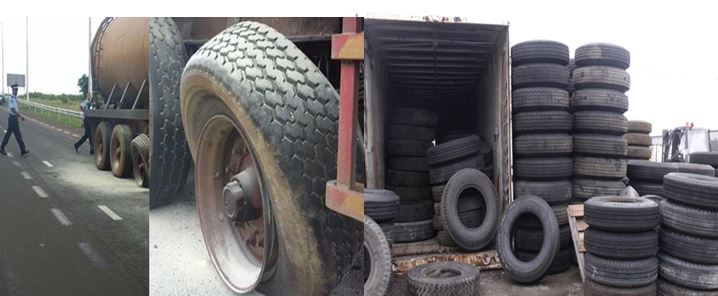Skip to content

Picture this: A fully loaded truck left your base somewhere in the Ikorodu axis of Lagos with a cargo scheduled for delivery somewhere in Maiduguri. Three days later just before lunch, you got a call from your Fleet Manager that the Driver lost two tractor tyres in transit…..and wait for this; the tyres were bought new just a day before the truck set out on the long haul, each costing N110,000.00! N220,000.00 gone! Add this up to an estimated load-specific fuel cost of N240,000.00 and net the sum total against load-specific freight earning of N470,000.00. That leaves N10,000.00 that is barely sufficient to cover trip expense/allowance cost of around N15,000.00!! Guess this story would not be too alien to any seasoned haulage business practitioner. Like some would say; that is the story of our life!
We painted the above scenario to drive home the relevance of the issue we will be addressing in this paper and that is talking about ‘How you can get your tyre to serve you more’.
When it comes to truck maintenance, tyres represent about 20% of total expenses. Tyre replacement cost represents one of the top three operations and maintenance cost items for any haulage firm. It therefore mean that tracking the actual performance, even if that tracking results in bad news, is essential to ensuring maximum tyre life for your assets. The loss associated with a failed tyre is well beyond the loss of the tyre itself. Other cost directly linked to a failed tyre includes:
Loss of valuable time that could either lead to substantial financial loss or breach of contract
Drivers discomfort associated with mounting and dismounting
Potential danger to other road users
Impoundment of the truck by traffic regulatory agencies
TRACKING TYRE PERFORMANCE
There are several different measurements that can be used to track tyre performance:
Inflation pressure
Wheel alignment
Tread-wear rate
Keeping a constant check of tyre pressure and alignment allow for better casing durability and tread wear. Fleets should always look for alternative ways to improve tyre monitoring. Some areas to focus on when choosing a monitoring system include ease of use, ease of capturing data, and accuracy of information. Complacency with tyre monitoring system means being passed by the competition that has a better or more effective way of doing the same thing. And if the competition is doing a better job of monitoring than you, then it’s likely you are spending more money than they are, which directly relates to the cost of your services and your end profit.
THE PLACE OF DRIVERS IN TYRE PRESERVATION
Drivers who take better care of their vehicles and tyres do make a huge difference. Drivers can improve casing life by avoiding curbs and potholes and by maintaining proper alignment and correct air pressure thus saving the fleet money. By tracking tyres and the vehicles that they are on, fleets can get a feel of which drivers are taking care of the equipment they are running. Initiating a rewards program is a good way to get drivers to pay more attention to detail. Organizations also need to spend quality time training their drivers especially on how to avoid curbs. It does not make any economic sense to turn a new driver loose on a N21million truck if they don’t know what they’re doing! And obviously, those who inspite of the huge spending on training still tend to hit curbs shouldn’t be permitted to stay in for too long. Even with just one truck, tyre maintenance is important
THE VALVE, STEM LEAKAGE AND LEVEL OF INFLATION
Another dimension of tyre maintenance not many people are cognizance of has to do with what you do when you work on your tyre. Anytime you take a valve core out of a tyre, throw it away and replace it with a new one. It is also important to make sure that every stem has a cap- not only to fulfill the law but to reduce the chance of valve-stem leakage. A leaking valve core will take air out of a tyre as fast as a nail will.
Under-inflation or below-par pressure should also not be encouraged. Aside from the risk it portends for the life of the tyre, mileage also respond directly to the level of the tyre’s under-inflation. A tyre with 20% under-inflation would most likely decrease mileage by the same quantum or more. Hence, the use of a well calibrated gauge is most recommended. Accurate reading should be the watchword.
CLOSING REMARKS
Daily visual checks should suffice, but pressure should be checked at least weekly instead of monthly. Whatever the life of the tyre, there is still a need to rotate and balance those tyres, to keep the vehicle in alignment, and to check all tyres daily. The mantra is that if you catch a problem early, you will be way ahead of the game as far as reducing your tyre costs is concerned.
It is our hope in Haulage Report Now that these nuggets of information would assist some companies if not all in adding tangible value to their business because that is why we are in business.
Comments
comments




